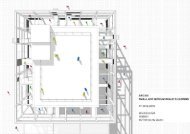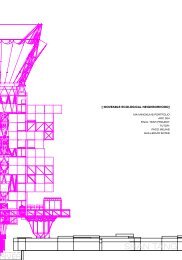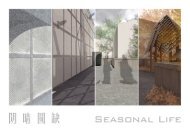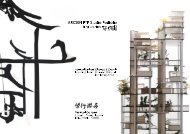YEARBOOK 2018 - 2019 | XJTLU DEPARTMENT OF ARCHITECTURE
The sixth edition of the yearbook of the Department of Architecture at Xi'an Jiaotong-Liverpool University presents student works created during the academic year 2018 - 2019. The yearbook exemplifies the new model for Chinese architectural education for which the department was commended by the Royal Institute of British Architects (RIBA). It is also a showcase of the creative culture that has guided our students towards successful international careers as responsible and creative architectural designers. The Department of Architecture at XJTLU offers RIBA Part 1, 2 and 3.
The sixth edition of the yearbook of the Department of Architecture at Xi'an Jiaotong-Liverpool University presents student works created during the academic year 2018 - 2019. The yearbook exemplifies the new model for Chinese architectural education for which the department was commended by the Royal Institute of British Architects (RIBA). It is also a showcase of the creative culture that has guided our students towards successful international careers as responsible and creative architectural designers. The Department of Architecture at XJTLU offers RIBA Part 1, 2 and 3.
You also want an ePaper? Increase the reach of your titles
YUMPU automatically turns print PDFs into web optimized ePapers that Google loves.
023<br />
024<br />
ARC103<br />
Introduction to Environmental<br />
Science<br />
<strong>2018</strong>-<strong>2019</strong> <strong>YEARBOOK</strong> Xi’an Jiaotong-Liverpool University Department of Architecture 西 交 利 物 浦 大 学 建 筑 系<br />
Observed global temperature change<br />
and modeled responses to stylized<br />
anthropogenic emission and forcing pathways,<br />
Image source:<br />
IPCC<br />
special report:<br />
Global Warming of 1.5 oC<br />
Level 1<br />
( Year 2 | Semester 2 )<br />
Module Credits<br />
5<br />
Module Leader<br />
Moon Keun Kim<br />
Teaching Team<br />
Thomas Wortmann<br />
Number of Students<br />
185<br />
This module introduces undergraduate students to the principles of<br />
environmental science in buildings. It focuses on the quantitative<br />
aspect of building science. In it students learn the fundamentals of<br />
thermodynamics and building physics essential to the understanding of<br />
building energy performance and urban environmental impact.<br />
Students learn about: bioclimatic design; the fundamental principles of<br />
heat transfer mechanisms; the role of construction layers in domestic<br />
walls; window lighting and thermal performance; the impact of building<br />
fabric on energy consumption; urban microclimates; fundamental<br />
passive heating and cooling systems; fundamental thermodynamics;<br />
heating, ventilation and air conditioning (HVAC); moisture condensation;<br />
thermal comfort; the psychrometric chart; domestic water; solar<br />
principles; fundamentals in lighting (day light and artificial lighting); and<br />
fundamental architectural acoustics.<br />
On completion of this module, students are able to specify and design<br />
a building facade and carry out relevant scientific approaches with<br />
numerical calculation and computer simulation to deliver high-quality<br />
thermal building energy performance. Students also understand how to<br />
specify and design recommended indoor thermal comfort levels. This<br />
module requires students to identify using low carbon building design<br />
strategies the energy load associated with space heating, cooling and<br />
ventilation in a building and the impact of building energy consumption<br />
on climate change and global warming.<br />
Level 01 – Year 2<br />
B Eng Architecture Programme
















